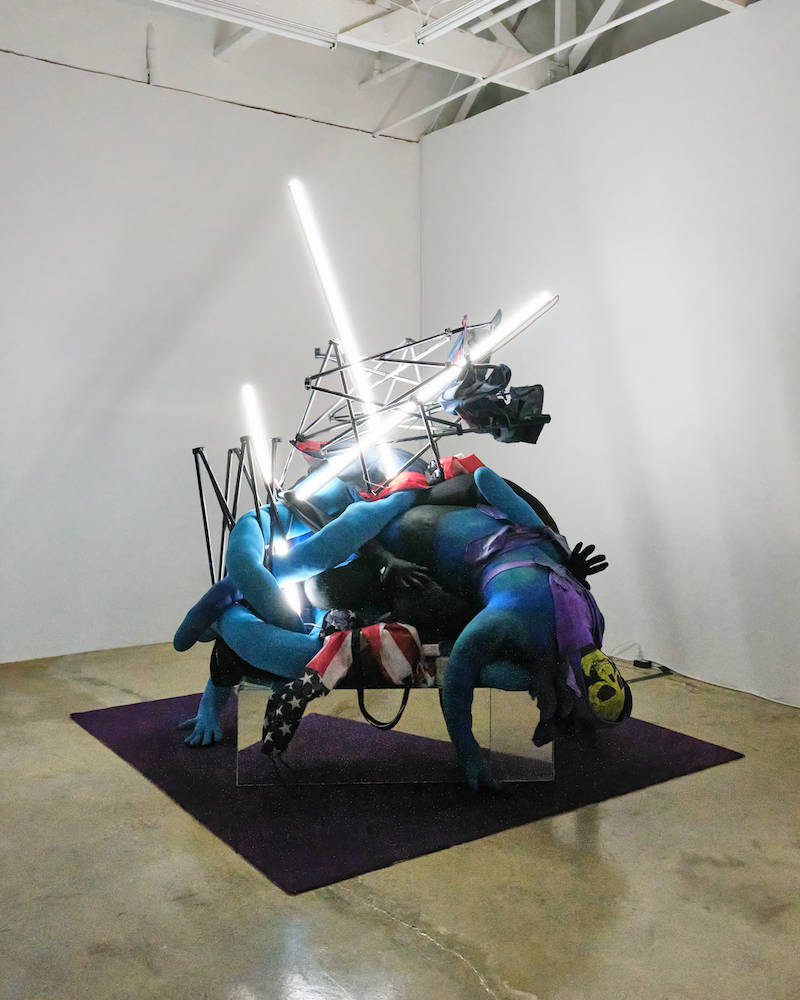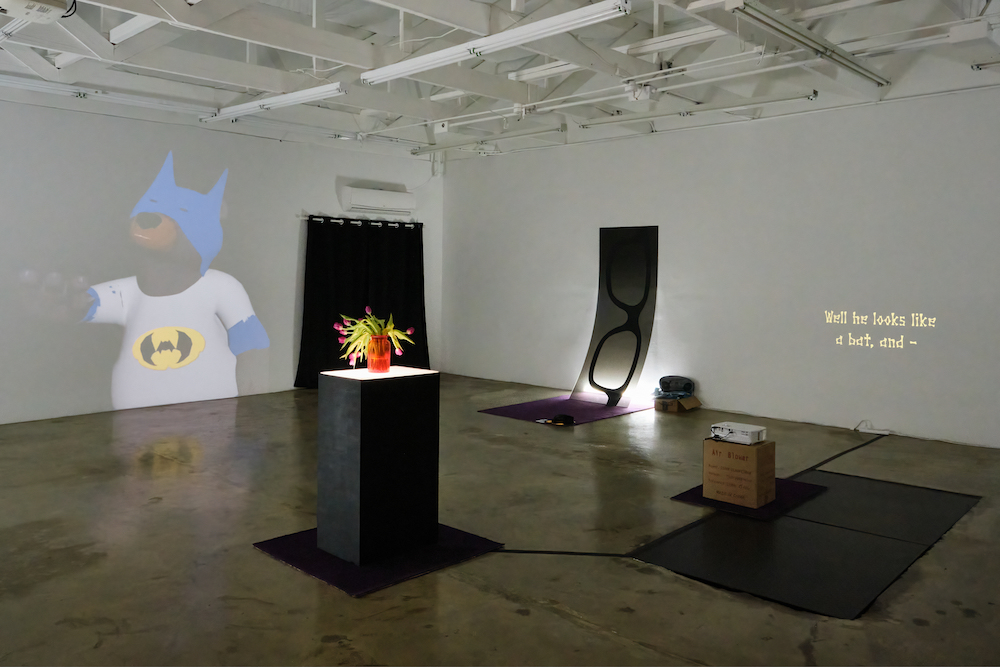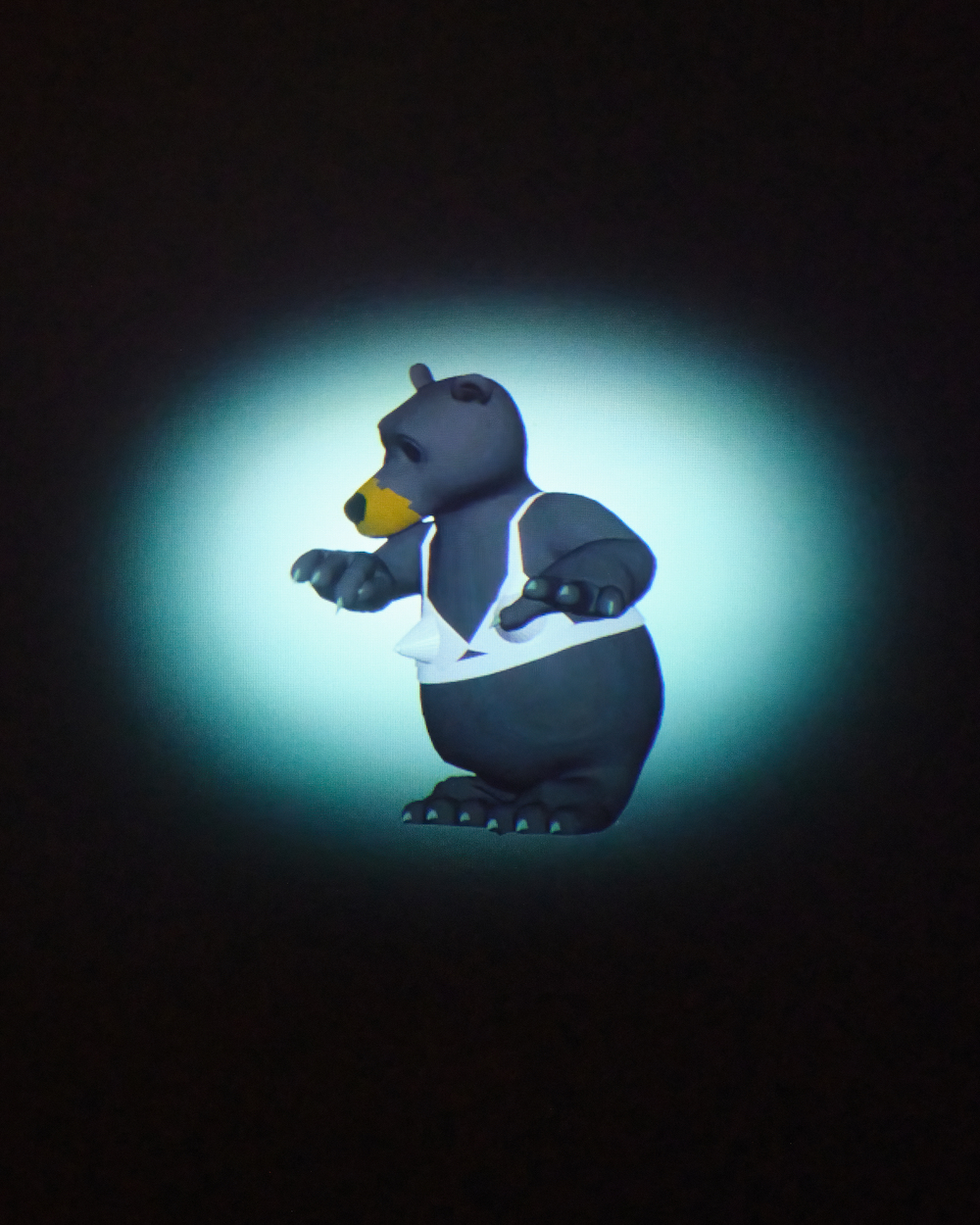The shower scene in Psycho. You know it, everyone’s seen it. Go to the end. We follow a trail of blood and water through the tub, then push in as it swirls down the drain. In this moment, always, I beg Hitchcock to follow the zoom, to continue completely down the drain… to enter the void entirely! Instead, the shot dissolves to another of a lifeless eye, and we telescope back out. We never enter the drain.
This is the feeling that overwhelms Olivia Mole’s “Nocturne,” one of almost reaching exactly what it is that you’re after, only to have it soften into something else entirely. If you’ve felt this feeling before, it was likely in a dream, or possibly as a word slipped from the tip of your tongue, though it may have also been in a moment of love. Fine art rarely captures this feeling—at least not what we’ve been seeing lately. Even at its most oblique, today’s gallery-bound art tends toward the definitive, the unencumbered, the essentialized. Nocturne does not, and that is good.
Technically, the show is one work, Dopesheet Batman Ep VI, made up of seven “islands” of material, each grounded on a patch of industrial-grade, purple carpet. At times, objects are in motion—two inflatable projection screens tangle as they bloat alongside each other, filling with air; an oscillating fan periodically blows an opaque acrylic sheet over the mirror behind it; a mound of stuffed figures and camping chairs rotates on a turntable. There is noise and music and light, and three projections run at varying intervals—two lo-fi animations of the Charmin Bear and one text-based video with a corresponding spoken-word audio track. At the center of it all, practically hidden by the ostentation, sits a quiet bouquet of wilting tulips. The entire show cycles through every twenty minutes.

Olivia Mole, “Nocturne,” 2024, installation view. Photo: Chris Hanke. Courtesy of the artist.
It’s all catch-as-catch-can, especially when it’s all moving. So much information, so much material. So much syncopation, too. A series of startling and then’s. You’re watching the silent video of Batman bear, and then the shrill spoken-word piece rings out, and then you catch your distorted reflection in mirrored acrylic, and then the moon bounce-like projection screens start to inflate, and then that fan turns on again, and then you finally make it over to read whatever it is that Mole has left Xeroxed on that table —evidence, perhaps?—and then the whole funhouse powers down altogether. Lights go off, things deflate, silence.
…yet, still, those tulips wilt. It’s the only part of the show that doesn’t stop, a punch unpulled. If we’re talking Psycho shower, the tulips—should we notice them—release us to the drain completely.
Considering the cyclical pomp and wreckage, one could easily interpret the show on purely systemic terms. A poetic indictment of the machine of so-called progress. Mole makes sure we don’t miss it, though. Her exhibition text consists of a single quote, uncredited, from the 19th century philosopher G.W.F. Hegel (“The owl of Minerva spreads its wings only with the falling of the dusk”), a sort of lamentation for man’s inability to understand history except in hindsight. Further, she summarizes her
materials list—which includes “Stars and Stripes Forever” by John Philip Sousa (the American military march composer, recorded in Independence, CA) and USA flag carry-bags—with the phrase, “A spell for the end of empire.” Seen through this lens, the show is one of many in recent memory that takes on the spectacle of late-stage capitalism in the United States, documenting the twilight of a system built for the system’s sake, rather than for the people in it.

Olivia Mole, “Nocturne,” 2024, installation view. Photo: Chris Hanke. Courtesy of the artist.
The explicit reference to empire, though—while formally incidental—becomes somewhat limiting when it serves as the only given frame for the show. It preprograms an otherwise labyrinthine installation toward a singular, simplified read; it gives us the right answer. And that dampens what is otherwise one of the exhibit’s greatest strengths: the agential wrinkle. Nocturne’s design requires that we situate ourselves in the rubble, that we move and decide rather than merely observe. As intentionally distracting as the show might be, almost every piece reflects back an image of the viewer to themselves—sometimes obstructed or distorted, often fleeting—via mirrors, acrylic sheets, or glass. This is deliberate, no doubt: we, as individuals, are implicated in our collective fate, and it’s up to us to notice precisely when and how.
If nothing else, “Nocturne” is a site of play or, as the Diane di Prima scanned text on one table makes mention, “a kind of detour” that breaks away from a more linear understanding of the world. The show pushes us to associate and connect. We sharpen our ears to hear through the dissonance, we meander about on a hunch, we turn just in time to see the mirror before the lights go off. Mole creates a playground that perpetually rebuilds and deconstructs, through which we can observe ourselves and perhaps even our conceits. In a demanding, yet dynamic way, “Nocturne” reminds us to be alive in time, and to notice it.


